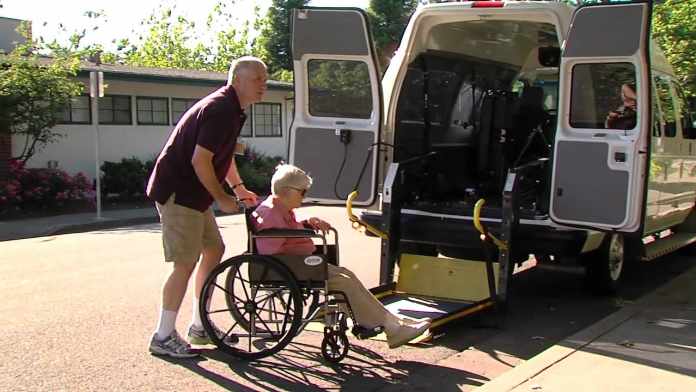Applying for Medicaid benefits can seem daunting, but many are very straightforward and may already be included in your current plan. This post will outline some basics about non-emergency medical transportation benefits and hopefully answer any questions you may have about this sort of coverage and these sorts of rides.
Benefits for non-emergency medical transportation vary by state and may not be available in your area for a variety of reasons. These can include your personal situation as well, depending on your state of residence. Generally, non-emergency medical transportation services will involve specially fitted vans designed for wheelchair users. The drivers are also specially trained to use all available safety and accessibility equipment to help ensure the safety and comfort of all passengers, including caregivers.
Knowing Your Benefits
Non-emergency medical transportation services are covered by Medicaid for eligible individuals. Non-emergency medical transportation services (NEMT) include rides to and from the hospital, doctor’s appointments, and other medical offices provided the customer is receiving Medicaid-approved care there. This coverage is referred to as non-emergency medical transportation because it is used for non-emergency medical care, such as follow-ups and other appointments.
Medicaid coverage for these sorts of rides will vary depending on your individual needs and situation. Generally, if you are enrolled in a Medicaid-managed care plan, a customer service rep will be able to give you information on ride benefits.
Medical Transport Vans
NEMT wheelchair vans are commonly used for these sorts of rides. These vans are approved by the Medicaid program in the state they service, and drivers are trained in the proper ways to use all safety and lifting equipment as well as best practices for ensuring the safety of all passengers.
How Application Typically Works
Basic Medicaid enrollment usually consists of three steps:
- Filling out the initial application
- Having a financial review
- Having a personal care needs assessment
The initial application can be filled out in person, online, or be mailed in after completion. After this, a financial review will be undertaken to help determine your financial eligibility. Once this is done, a personal care needs assessment will be conducted to determine your functional eligibility and what sort of services will be best for you going forward.
In most managed Medicaid plans, you can be given information on non-emergency medical transport rides. Most of the time, this benefit is covered with no co-pay, but it is always a good idea to check the rules and requirements for your own state. Enrollment in these specific benefits will vary from state to state, such as in Arizona where the service must be necessary, and you must have no other means of transportation, or in Kentucky, where the service is not available if there is a working vehicle in the household.
Some states have a distance requirement that is not to be exceeded, while others do not place limitations on the travel distance needed. In these cases, distance arrangements will have to be worked out between yourself and the non-emergency medical transport company.
Medical Transport Companies
Many companies offer safe and on-time non-emergency medical transportation to those with special needs, including those in wheelchairs, those who require a gurney, and those with memory issues. These companies often have a specific range they work within, but may be willing to exceed it if necessary.
Non-emergency medical transportation fees are often covered by Medicaid provided that your benefits cover non-emergency medical transport, and you are using an approved service provider.
Using Medicaid for Your Non-Emergency Medical Transport
Applying for Medicaid is usually done in a few stages, beginning with an application which can be filled out in person, online, or mailed in after completion. Many managed plans allow for information on such rides to be given out. Your managed plan may already cover non-emergency medical transportation, so be sure to check into your benefits if you think you may require it in the future. Fees for non-emergency medical transportation may be covered by Medicaid if certain criteria are met, such as receiving Medicaid-approved care at the facility.
There are many reasons that someone may need non-emergency medical transport, such as follow-up or routine doctor’s appointments and specialist care. Some instances even cover other point-to-point transportation. While many plans cover general non-emergency medical transportation, the requirements for services vary between states, so it’s important to check with local information, so you know whether you qualify or not.
Non-emergency medical transport vans are often wheelchair-accessible vans with drivers who have been specially trained to use all the safety equipment available, ensuring the safety and comfort of all passengers, including caregivers who may ride along. These sorts of specialty vans can accommodate a wide range of special needs, including wheelchairs, gurneys, and scooters, and assisting those with memory issues.
Most medical transport services working in non-emergency transportation have a specific area or areas they serve, providing point-to-point transportation for those qualified for it. They may also be willing to work outside their pre-defined range at the driver’s and company’s discretion. These kinds of medical transport companies will be Medicaid approved and the fees should be covered by your plan so long as all the official criteria are met.
We hope this cleared up some things about non-emergency medical transportation, what it is, and how you can use Medicaid to pay for it.



















